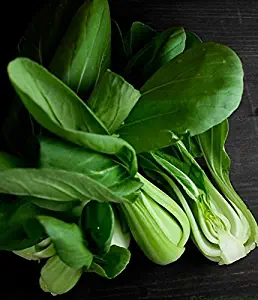
Best Daily Vitamin And Mineral Requirements Chart
Nowadays, there are so many products of daily vitamin and mineral requirements chart in the market and you are wondering to choose a best one.You have searched for daily vitamin and mineral requirements chart in many merchants, compared about products prices & reviews before deciding to buy them.
You are in RIGHT PLACE.
Here are some of best sellings daily vitamin and mineral requirements chart which we would like to recommend with high customer review ratings to guide you on quality & popularity of each items.
Vitamins & Minerals Guide – Canadian edition – Quick Reference Guide by Permacharts
MAGNESSIUM: THE MIRACLE CURE: Self guide to using magnessium to cure various ailments and Home uses
- Culture : Sow From Early Spring Through Midsummer. In The South, Pac Choi Is Well Adapted For Fall Plantings. Sow 15 Seeds/Ft., 1/4" Deep In 2" Wide Bands In Rows 18" Apart. Thin Plants As Recommended In Our Pac Choi Comparison Chart. Harvest Before Flowering. For Baby Leaf, Sow 60 Seeds/Ft. In A 2" To 4" Wide Band. Clip 4-5 Week-Old Leaves.
- Pests : Flea Beetles Can Be Controlled By Covering With Floating Row Covers (See Index) From Day Of Sowing. Avg Direct Seeding Rate : For Bunching: 830'/Oz., 13,000'/Lb. At Above Spacing. For Baby Leaf: 210'/Oz., 3,300'/Lb. At Above Spacing.
Pak Choi White Stem Cabbage 400 Seeds #FSTM
Pak choy, also known as leafy Chinese-cabbage, is one of the popular vegetables in the mainland China, Philippines, Vietnam and other East-Asian regions. At the same time, this humble Brassica family leafy-vegetable has captured attention of the western world for its sweet, succulent nutritious leaves and stalks. Health benefits of bok choy Bok choy is one of the popular very low-calorie leafy vegetables. Nonetheless, it is a very rich source of many vital phytonutrients, vitamins, minerals, and health benefiting antioxidants. 100 grams of bok choy carries just 13 calories. It is one of the recommended vegetables in the weight-reduction programs falling under “zero calorie or negative calorie” category of food items, which when eaten would add no extra calories to the body but facilitate calorie (fat) burn and thereby bring a reduction in the body weight. As in other Brassica family vegetables, bok choy too contains certain antioxidant plant chemicals such as thiocyanates, indole-3-carbinol, lutein, zeaxanthin, sulforaphane, and isothiocyanates. Together with dietary fiber and vitamins, these compounds help protect against breast, colon, and prostate cancers and help reduce LDL or “bad cholesterol” levels in the blood. Fresh pak choi is an excellent source of water-soluble antioxidant, vitamin-C (ascorbic acid). 100 g provides 45 mg or 75% of daily requirements of vitamin-C. Regular consumption of foods rich in vitamin-C helps the body develop resistance against infectious agents and scavenge harmful, pro-inflammatory free radicals from the body. Bok-choy has more vitamin-A, carotenes, and other flavonoid polyphenolic anti-oxidants than cabbage, cauliflower, etc. Just 100 g of fresh leaves provide 4468 IU or 149% of daily-required levels vitamin A.










